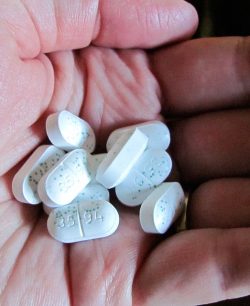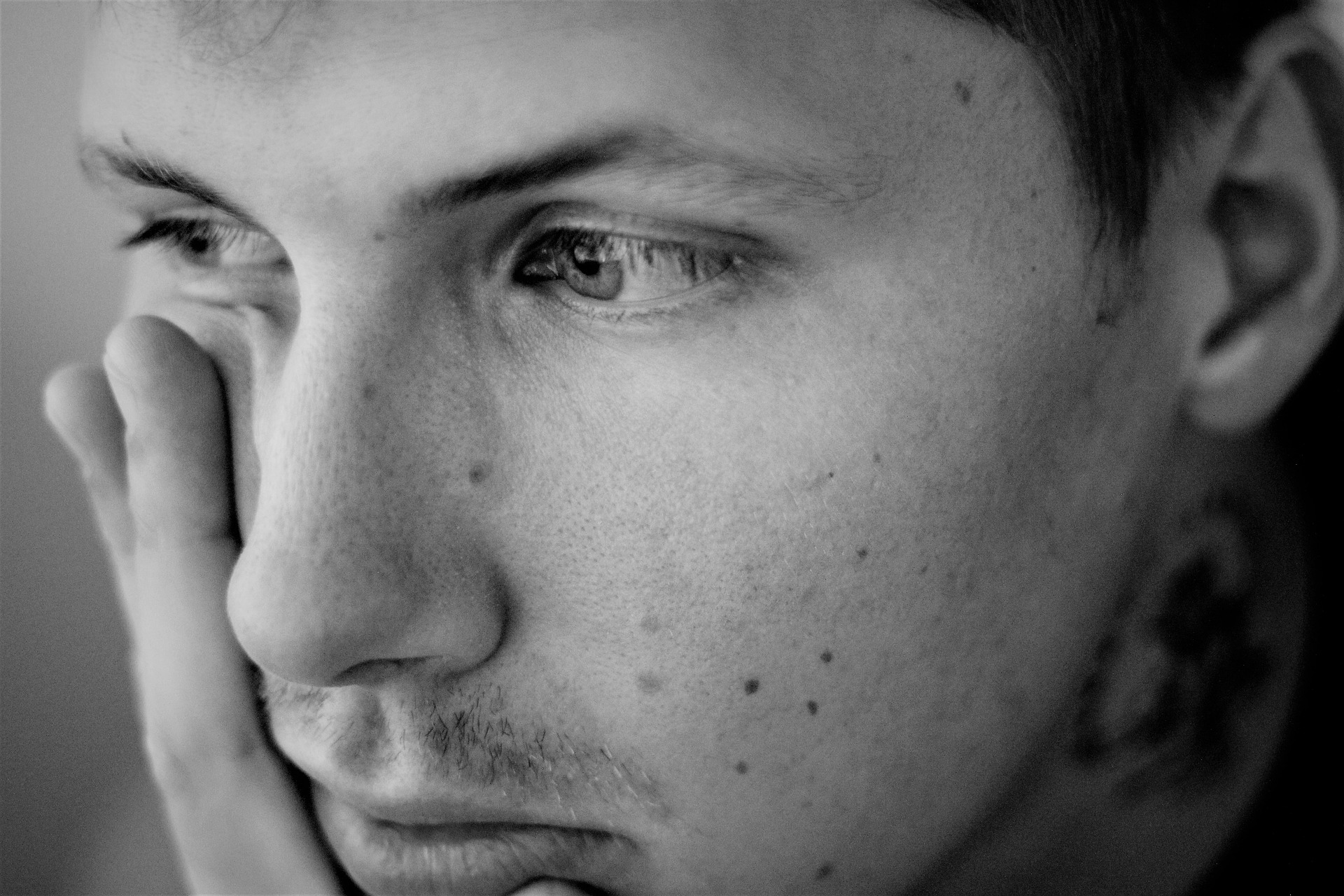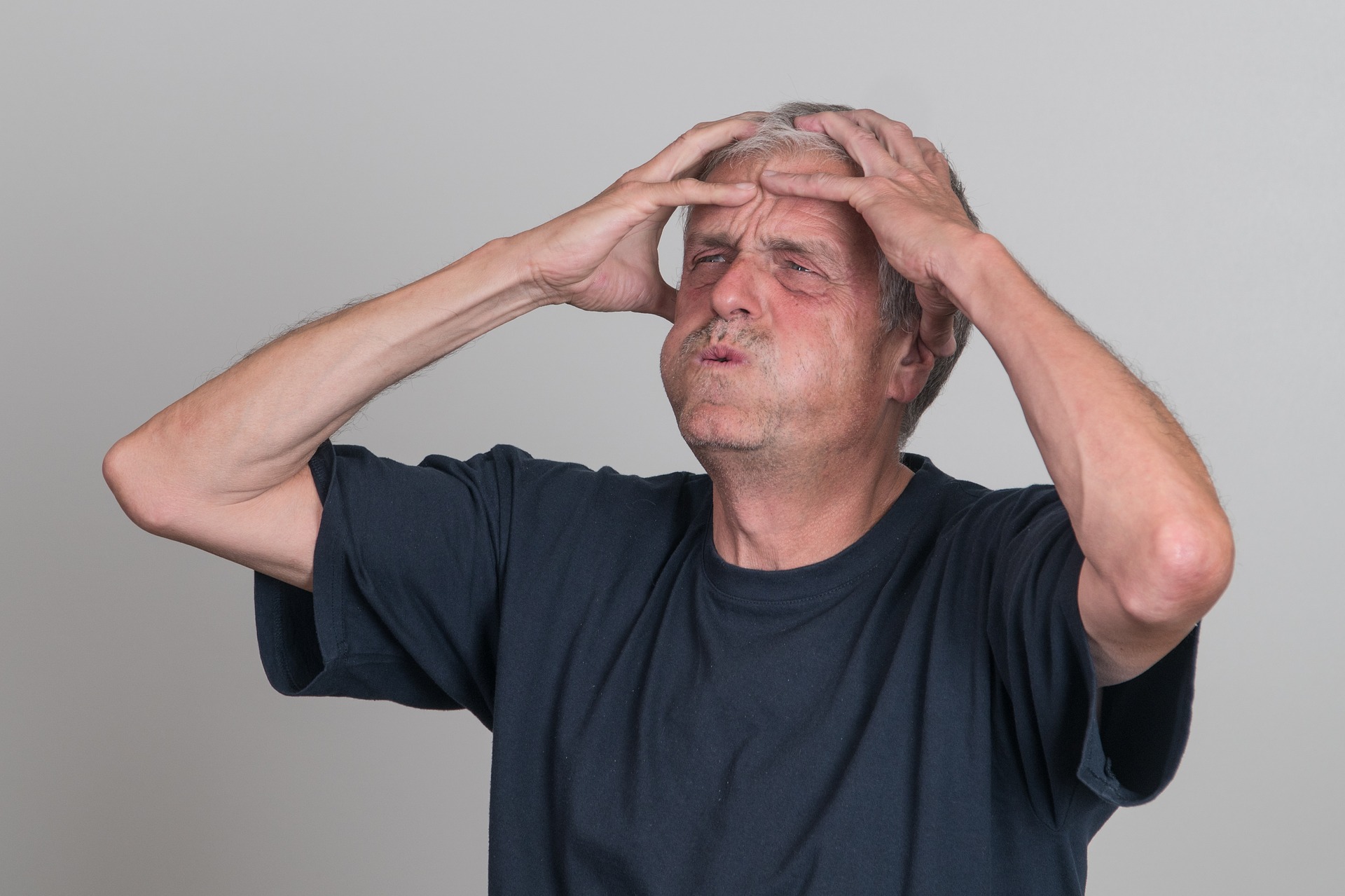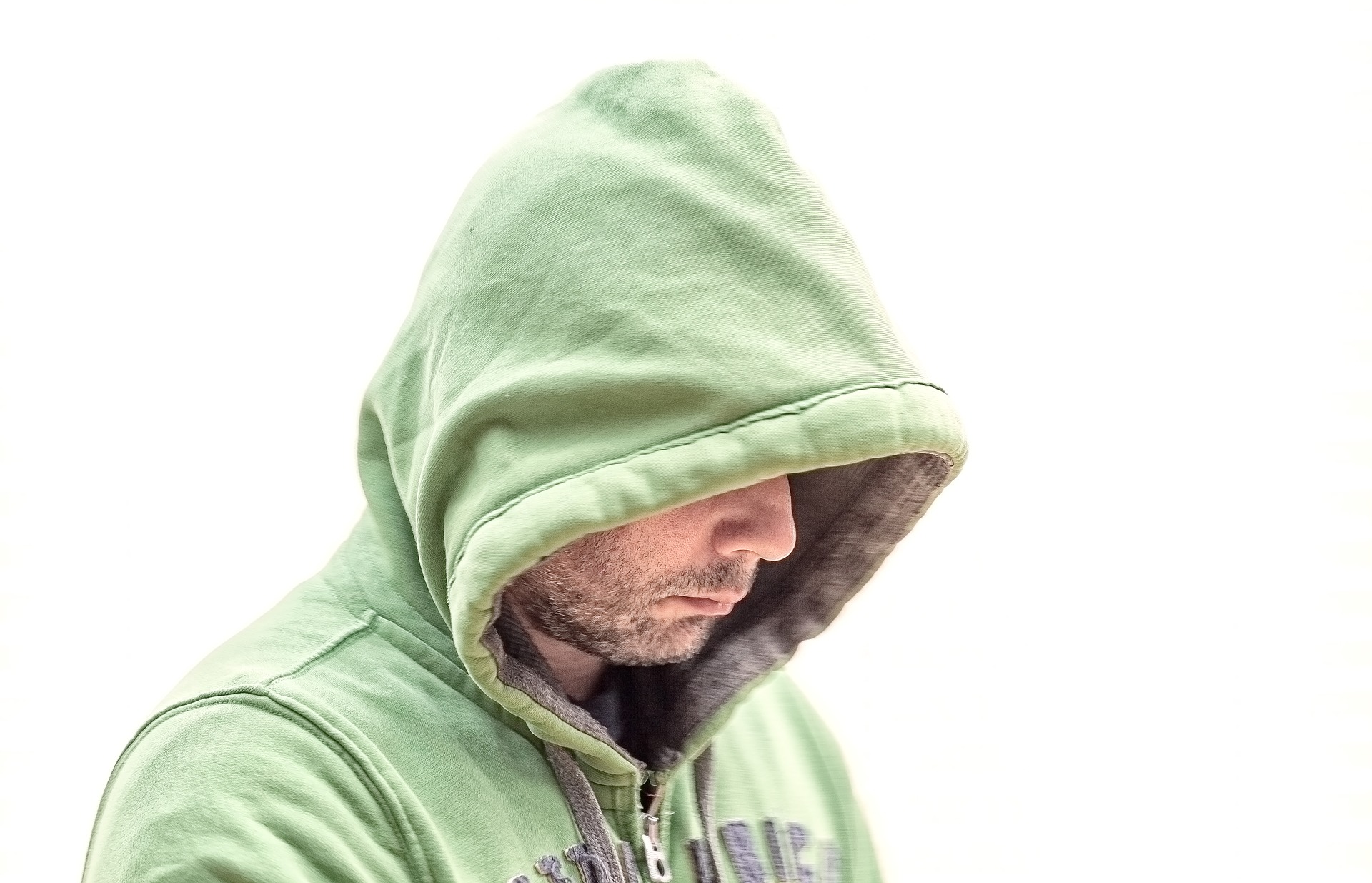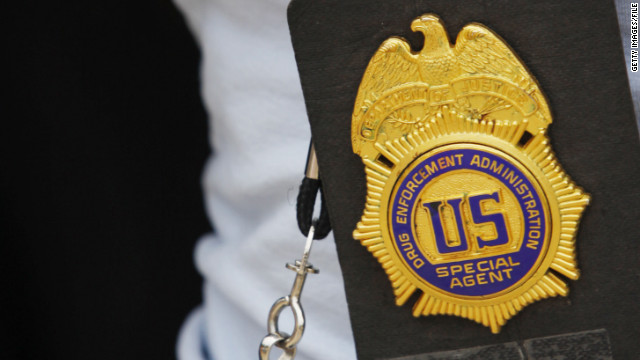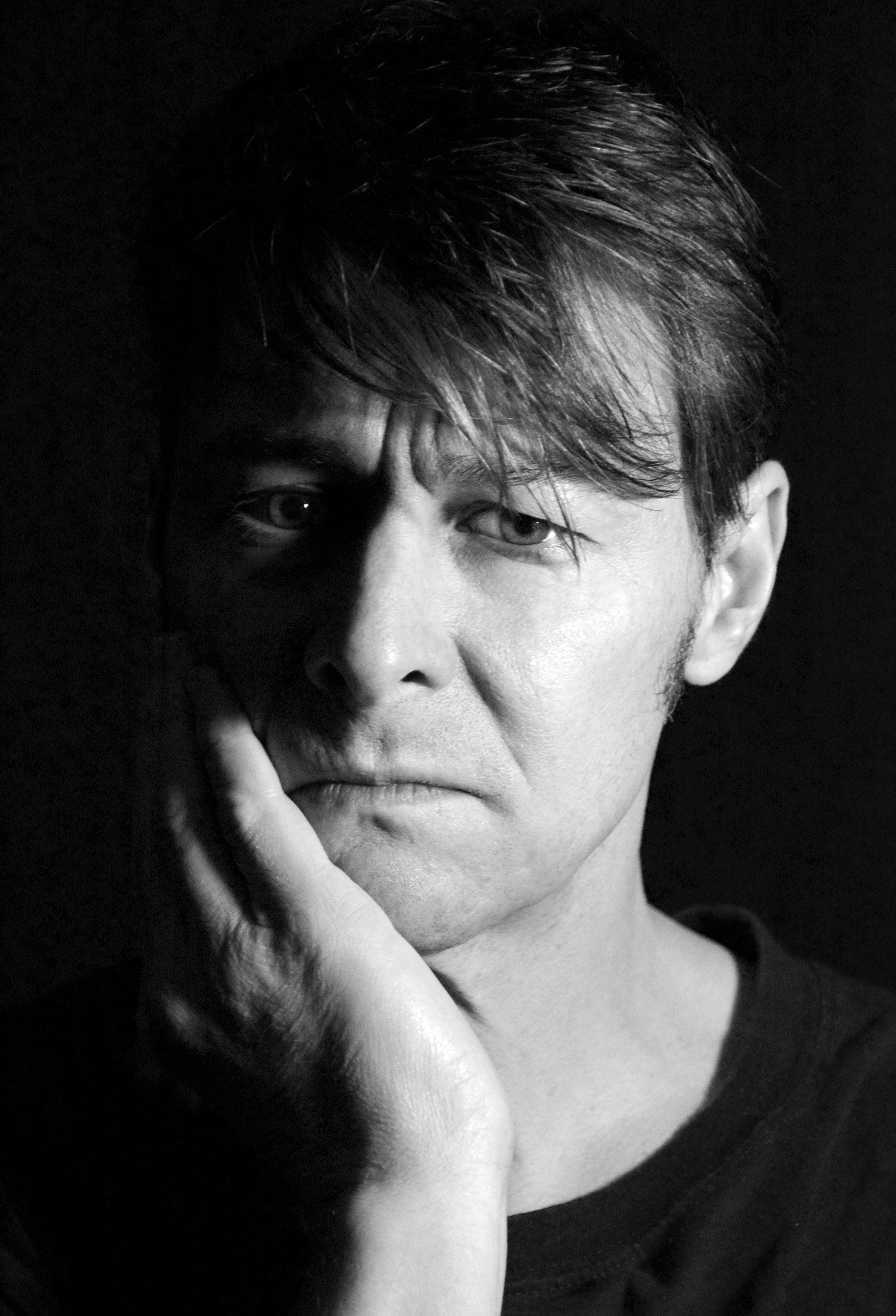According to the Center for Substance Abuse Research, “Oxycodone is a semi-synthetic opiate manufactured by modifying the chemical thebaine, an organic chemical found in opium.” The drug itself is the active ingredient in many prescription medications used to treat pain, such as OyxContin and Percocet. Oxycodone, when abused, can become addictive very quickly, and those who have been taking it recreationally or in higher doses than prescribed for a long period of time will require professional medical help.
Immediate Oxycodone Addiction Treatment

Before choosing a treatment plan, the doctor will ask about the patient’s medical and drug abuse history.
The first part of the treatment process for oxycodone abusers is very similar to that of any other drugs of abuse. According to the National Library of Medicine, when a patient is brought into a treatment center for opioid intoxication, “the provider will measure and monitor the person’s vital signs, including temperature, pulse, breathing rate, and blood pressure.” As soon as the individual is stable, the doctor will begin asking questions about the patient’s drug abuse habits, medications, and other medical needs in order to create an individualized treatment program for the person.
Withdrawal from oxycodone is not life-threatening but it can be physically uncomfortable, even painful, and possibly lead to relapse if it is not treated right away. The NLM states, “The most commonly used medication, clonidine, primarily reduces anxiety, agitation, muscle aches, sweating, runny nose, and cramping.” However, some patients do start maintenance with methadone or buprenorphine, which treats both withdrawal and addiction.
Medications for Oxycodone Addiction Treatment
Long-term, slow release methadone or buprenorphine treatment can help minimize cravings, reduce withdrawal symptoms, and generally allow the individual to live their life without the severe side effects of quitting opioid abuse. One of these medications will often be used to treat any type of opioid addiction, including oxycodone. However, some individuals may opt for naltrexone, a medication that is given after withdrawal has ended, blocks the effects of opioids, and precipitates withdrawal in those who begin to abuse narcotics again. Depending on your needs, the severity of your addiction, and your particular situation, you and your doctor can decide together which medication is best for you.
Behavioral Therapies for Oxycodone Addiction Treatment
Oxycodone addiction is treated much like other narcotic use disorders where the individual may receive behavioral therapy treatment in the form of:
- Cognitive-behavioral therapy
- Contingency management
- Group therapy
- Family or couples therapy
Some of these different techniques may be utilized together to help the patient deal with different issues in their life. Behavioral therapy does much of the work to truly change an individual’s addictive behavior and give them the tools to better cope with issues in their life and avoid drug abuse in the future.
Seek Oxycodone Addiction Help Now
According to Harvard Medical School, “The patients most susceptible to OxyContin addiction are those with a history of alcohol or drug abuse or addiction.” Unfortunately, though, anyone who does abuse the drug could become addicted. If you are already addicted to oxycodone or if you have been abusing one of the drugs with oxycodone as an active ingredient, it is never too late to seek help.
Call 800-934-1582(Sponsored) today to find addiction treatment centers in your area or to learn more about oxycodone addiction and abuse.
According to the Drug Enforcement Administration, “Hydrocodone is the most frequently prescribed opioid in the United States and is associated with more drug abuse and diversion than any other licit or illicit opioid.” While addiction to hydrocodone is a serious issue that occurs with some frequency, it can be treated in the same ways other opioid addictions are treated, and addicted individuals can safely begin to recover in a way that helps them avoid further opioid abuse and the problems it causes.
Immediate Hydrocodone Addiction Treatment
Hydrocodone “is an orally active agent most frequently prescribed for the treatment of moderate to moderately severe pain.” Many individuals who are prescribed this medication turn to abusing it when their tolerance levels climb higher, and those who take it recreationally often do so to feel the euphoric effects it can cause when taken in high doses. Both these actions can lead to addiction.
The first thing a medical professional will do when you seek treatment for hydrocodone addiction is to find out more about your drug use and why you began abusing hydrocodone. Then, they will take tests to determine your current physical and psychological status and stabilize any issues you may be experiencing as the result of intoxication or withdrawal. Once you are more stable, you can begin your actual addiction treatment.
Medications for Hydrocodone Addiction Treatment
According to the National Institute on Drug Abuse, “Several options are available for effectively treating prescription opioid addiction.” First, the individual is usually put on a medication, either one that will treat their withdrawal symptoms as they withdraw from the drug or one that will treat their addiction and stabilize their condition. They may be given clonidine, methadone, or buprenorphine in lessening doses as they go through withdrawal.
As a different method, the individual may be put on buprenorphine or methadone for a specific period of time to minimize their withdrawal symptoms and allow them to become stable after stopping their abuse of hydrocodone. In some instances, a person may go on naltrexone, an opioid antagonist, after their withdrawal ends, but most people either choose to be stabilized on methadone or buprenorphine or go through a medically-assisted withdrawal.
Behavioral Therapies for Hydrocodone Addiction Treatment
Cognitive-behavioral therapy is the most commonly used behavioral treatment for opioid addiction. As stated by the NIDA, its strategies are “based on the theory that in the development of maladaptive behavioral patterns like substance abuse, learning processes play a critical role.” The patient learns how to react differently in the future to the issues that initiated their drug abuse and to avoid cravings, triggers, and other issues that would cause them to turn back to drug abuse.
There are several other types of behavioral therapies often involved in hydrocodone addiction treatment programs, including contingency management, group therapy, family therapy, couples therapy, and 12-step facilitation therapy. Strategies from one or more of these may be implemented into the individual’s treatment program.
Seek Help for Hydrocodone Addiction Now
Those who abuse hydrocodone frequently will require treatment no matter how serious their abuse has become. Addiction, though, will only become worse with time, so call 800-934-1582(Sponsored) today to find treatment centers in your area or to learn more about hydrocodone and its effects.
It is important to understand that all narcotics, whether prescription-based or illicit, can become dangerous if abused. According to the National Library of Medicine, “These drugs can be… habit-forming,” and “have been associated with accidental overdose deaths” in those who take them in high doses. Narcotics must be taken carefully and taken as prescribed at all times, and there is a reason why certain narcotics are not recommended for use at all.
How Can Narcotics Be Dangerous?
As stated by the Drug Enforcement Administration, “Besides their medical use, narcotics/opioids produce a general sense of well-being by reducing tension, anxiety, and aggression. These effects are helpful in a therapeutic setting but contribute to the drugs’ abuse.” Someone who takes the drugs to feel these effects will eventually need to take more to feel the same high, leading to compulsive drug use and addiction, a higher risk of overdose, and a host of side effects caused by the act of abusing narcotics in large doses.
It should be remembered that prescribed narcotics can be taken safely and without severe side effects, including addiction. But whenever an individual starts to take these drugs in a way other than prescribed, it becomes more and more likely over time that they will become addicted to the drugs’ effects. Narcotics are dangerous because they lead to many issues associated with severe drug abuse, addiction, and the need for treatment, but these results will only occur if someone abuses them in the first place.
Is Heroin Ever Safe to Use?
Though it can sometimes be safe to use certain opioid-based substances, heroin is a Schedule I substance according to the Controlled Substances Act. This means it is never used medically for any reason and that it has a higher potential for abuse compared to any other schedule drug. It is never safe to use heroin in the way it may be safe to use prescription narcotics under a doctor’s care. A person who abuses, sells, or obtains heroin could be arrested for this act because of the severity of the drug’s effects and its dangerous nature.
Are Narcotics Always Dangerous?
No. A person can take certain narcotics, including but not limited to hydrocodone, oxycodone, morphine, methadone, etc., to treat symptoms of pain and other problems and be perfectly healthy, avoid experiencing severe side effects, and never become addicted to these drugs. However, it is important for the individual to be aware of the risk of these drugs causing dangerous side effects and how they must be careful of this possibility if they are taking narcotics through a doctor’s prescription.
All narcotics can be dangerous, heroin especially, but those that can be prescribed by a doctor are safe to take as long as the doctor and patient stay in touch and the patient abides by their treatment plan. If you want to learn more about narcotics and their risks or find an opioid addiction treatment center near you, call 800-934-1582(Sponsored) today.
Oxycodone and Oxycontin are often heard about in the news and online. Treatment facilities hate these two drugs equally because they know that the drugs have ruined the lives of so many of their patients. Doctors have mixed feelings about the drugs because they realize how helpful the pain relief properties of each are in the correct circumstances but also the risks associated with dependence when taken by the wrong patient. But what’s the difference between Oxycontin and Oxycodone?
Oxycodone is the active ingredient, and the only ingredient in Oxycontin. Similarly, Oxycodone is also an active ingredient in many other medications such as Percocet, Percodan and Tylox but in these instances, the active ingredient is mixed with other medication compounds such as ibuprofen or Tylox.
So Is Oxycontin More Dangerous than Oxycodone?
Technically speaking, they are the same medication in that Oxycontin is made up of Oxycodone. However, in some ways, Oxycontin is more dangerous because when Oxycontin is prescribed it means that the patient is receiving a medication that is pure Oxycodone without any other medication compound such as Tylenol or ibuprofen to lessen the effects.
The effects of a combined medication such as Percodan (which uses ibuprofen and Oxycodone) generally provide 4-6 hours of pain relief because the actual amount of Oxycodone provided in a dose is only 5-10 mg. Likewise, Oxycontin will generally provide a time release dose of medication that will effectively eliminate pain for up to 12 hours.
So What Makes Oxycontin so Dangerous?
The real danger comes in when people abuse the medication. Taken as prescribed, both Oxycontin and Oxycodone have generally safe effects IF the medication is monitored by a doctor, the patient takes the medication exactly how it is prescribed and does not take other drugs or drink alcohol when using the medication.
Likewise, if an Oxycontin tablet is crushed and later swallowed, snorted or injected, the time-release properties that made the medication generally safe are gone and the entire dose of the drug is immediately administered creating serious potential for overdose.
According to the DEA, overdose can lead to:
- Respiratory failure
- Heart attack
- Seizures or convulsions
- Loss of consciousness
- Death
What to Do If you’re Addicted to Oxycodone or Oxycontin
If you suspect that you or someone you care about may have a prescription drug problem, you’re not alone—studies estimate than 3 out of 5 people who take pain medication become addicted eventually. Even good people, like yourself, are at risk if you have been prescribed a medication such as Oxycodone. If you haven’t been prescribed this medication, but take it recreationally, the risk of addiction is even greater.
Narcotics.com helps to place people into treatment. Call 800-934-1582(Sponsored) to speak with a representative who can help you get into a recovery program that will minimize the trauma that this addiction has caused.
Allowing a narcotic addiction to go untreated is one of the leading causes of death in the United States. In fact, the Centers for Disease Control and Prevention state that more people die from overdose in the United States as a result of using legal pain medications than those who die as a result of illegal drug overdose.
For help finding treatment, or to speak with someone about the risks associated with Oxycontin or Oxycodone, call 800-934-1582(Sponsored) toll-free now.
Narcotics are a category of drugs that include all substances, synthetic and natural, that come from the poppy plant and have opioid-based qualities. According to the Drug Enforcement Administration, “Examples include the illicit drug heroin and pharmaceutical drugs like OxyContin, Vicodin, codeine, morphine, methadone, and fentanyl.” But why are some narcotics illegal while others are not?
Illegal Narcotics vs. Prescription Narcotics
In the United States, the Controlled Substances Act lists drugs and other substances that could potentially be harmful or are otherwise controlled under government regulations. “Narcotics/opioids are controlled substances that vary from Schedule I to Schedule V, depending on their medical usefulness, abuse potential, safety, and drug dependence profile.” Those listed as Schedule I drugs, like heroin, are not used in any medical sense and have a high abuse potential. Those listed in lower Schedules have varying medical uses and lower abuse potentials than those of the Schedule above them.
This is why there are illegal narcotics like heroin, which are not used for any type of medicinal purpose and, therefore, are illegal to have in any instance, and other drugs that are considered legal to use through a doctor’s care. Most commonly known opioids are legal to take under a doctor’s treatment, but these must be taken exactly as prescribed. Otherwise, this could be considered drug abuse, which is illegal in itself.
The Illicit Use of Narcotics
Any time a person buys, sells, or uses heroin, this is considered substance abuse and an illegal act. However, even though a person can take prescription opioids legally when prescribed them by their doctor, many still abuse these prescription drugs by buying them, selling them, stealing or faking prescriptions in order to obtain more, or just taking them in higher doses then prescribed. These acts are also considered illicit substance abuse because the only way to legally take prescription narcotics is to take them exactly as a doctor has prescribed them.
According to the National Library of Medicine, “When used carefully and under a health care provider’s direct care, these drugs can be effective at reducing pain,” but if they are taken without a doctor’s permission or against their prescription in some way, they can potentially become just as dangerous and just as addictive as heroin. Therefore, it is not always legal to use prescription narcotics, and especially if you are taking them without the explicit permission of a healthcare professional licensed to prescribe them, you are illegally abusing narcotics.
Illegal Opioid Abuse is Dangerous
Some narcotics can be helpful to many people, as long as they are taken as prescribed. This is the main reason why there are both illegal and prescription opioids. However, you must remember that the illegal abuse of opioids––no matter what kind––is dangerous and that this can always occur with any prescription narcotic if you take it without a doctor’s instruction and care. Call 800-934-1582(Sponsored) today to find out more about narcotics or to find treatment centers in your area for opioid addiction.
According to the Drug Enforcement Administration, fentanyl has “an analgesic potency of about 80 times that of morphine.” This means, if a person begins abusing their fentanyl medication, they may likely become addicted to the high levels of analgesic and euphoric effects. But how is fentanyl addiction treated?
Seeking Care for Fentanyl Addiction
Treatment for those who are addicted to this prescription drug is similar to other opioid addiction treatment programs. A person will first need to seek the treatment program that best fits their needs, consider whether or not they require inpatient or outpatient care, and ensure that a particular treatment center is the right place for them before they begin the program. Then, they can start to withdraw from the drug.
Medically Assisted Withdrawal or Maintenance
Medically assisted withdrawal, also known as detox, is usually the first step in fentanyl addiction treatment. According to the National Library of Medicine, “Supportive care and medications” are involved, and the withdrawal period may last for about a week or so. The patient may receive clonidine (an antihypertensive medication that treats withdrawal symptoms associated with alcohol and opioids), methadone (a synthetic opioid agonist that blocks opioid receptors), or buprenorphine (a partial opioid agonist that works similarly to methadone) to minimize their symptoms.
In some cases, the person may be put on maintenance instead, either with methadone or buprenorphine. Depending on the individual’s level of physical dependence or other needs, one medication may be chosen, and then the person will take it as prescribed to minimize their symptoms of withdrawal, their cravings, and any other issues associated with their fentanyl abuse. This can often be beneficial for those who need more time than just a week or two to cope with their withdrawal symptoms and become stabilized in their recovery from fentanyl addiction.
Behavioral Therapy
Another important part of fentanyl addiction treatment is the use of behavioral therapies to change the way the person feels toward their addiction, to treat any co-occurring mental disorders that may be worsening the addiction, and to help the individual learn to cope with other issues in their life. Some possible behavioral therapy courses for fentanyl addiction treatment include:
- Cognitive-behavioral therapy
- Contingency management
- 12-step facilitation therapy
- Group therapy
- Couples or family therapy
The individual can learn ways to make changes to their life and behavior in these therapy sessions that will allow them to lead more productive, happier lives and avoid relapse to drug abuse. In most programs, group and individual therapy are used together to help patients through both social and reflective options.
Seek Fentanyl Addiction Help Now
According to the US Department of Justice, fentanyl is a drug with such intense effects, it can “serve as a direct substitute for heroin in opioid dependent individuals.” The drug is very dangerous, especially when used in this way, “because it is much more potent than heroin and results in frequent overdoses that can lead to respiratory depression and death.”
If you are addicted to fentanyl or have been using it as a substitute for heroin abuse, you should seek addiction treatment right away. Call 800-934-1582(Sponsored) to find treatment centers in your area. Call today; we can help.
Opiate drugs attack the mind and body in subtle ways that may not be apparent during the early stages of drug abuse. Once opiate addiction takes shape, the drug has taken over a person’s power of choice, producing behaviors that are likely uncharacteristic of the loved one you once knew.
A drug intervention can be an effective means for helping an addict see the effects opiate addiction has on his or her life as well as on the lives of others. In cases of severe opiate addiction, the need for a drug intervention specialist may well be warranted under certain circumstances.
Opiate Addiction Effects

A drug intervention specialist is trained to help guide the meeting in such a way that the addict is more likely to seek treatment.
Unlike a physical dependence, opiate addiction takes hold of the addict’s mind, becoming a driving force that dictates his or her priorities and motivations throughout any given day. As an addictive substance, opiates alter the brain’s chemical makeup at the outset, and then warp the areas that control reasoning, emotions and perception. According to State University of New York at Buffalo, the compulsive, drug-focused mindset that characterizes opiate addiction acts as a type of behavioral syndrome much like a psychological disorder works.
Benefits of Using a Drug Intervention Specialist
A drug intervention requires a certain amount of planning in terms of organizing the attendees, drafting scripts of what will be said and making the necessary arrangements with a drug treatment center. According to the National Center for Biotechnology Information, drug intervention specialists play key roles in guiding the course of the meeting and ensuring information is presented in such a way that the addict can see how his or her behavior affects others. Granted, with enough research and planning, most people can conduct a drug intervention meeting on their own; however, certain types of circumstances warrant the level of training and experience a drug intervention specialist has.
Further Considerations
If you or someone you know is considering holding a drug intervention for a loved one struggling with opiate addiction and have further questions about how drug interventions work, please feel free to call our toll-free helpline at 800-934-1582(Sponsored) to speak with one of our addictions specialists.
Considering the increasing acceptance of marijuana use within the legal system, the term “marijuana abuse” may well become obsolete in the eyes of the law in future years. That being so, marijuana’s less favorable effects still exist and can pose considerable harm to those who engage in marijuana abuse on a frequent basis.
Marijuana interacts with the brain in much the same way as other addictive substances, gradually offsetting the brain’s natural chemical system. Likewise, chronic or long-term marijuana abuse poses considerable risk to a person’s psychological well-being over time.
In effect, excess marijuana use can predispose a person to psychological dysfunction. According to the Journal of Psychiatry, as the frequency of marijuana use increases the risk of mental illness rises accordingly. For these reasons, understanding the relationship between marijuana abuse and mental illness can help in determining whether treatment help is needed.
Marijuana’s Effects
Marijuana’s active compound, THC interacts with certain key brain cell sites in much the same way as the brain’s own THC-like chemicals, also known as endocannabinoids. Endocannabinoids play key roles in regulating the following brain functions:
- Emotions
- Pain/pleasure responses
- Thinking processes
- Sensory perceptions
- Perception of time
Marijuana forces cell sites to secrete copious amounts of endocannabinoids. With marijuana abuse, these interactions gradually change the brain’s chemical network and ultimately changes the way the brain works. These effects create the perfect conditions for psychological disorders, such as depression, bipolar, anxiety and even schizophrenia to develop.
The Relationship Between Mental Illness and Marijuana Abuse

Chronic marijuana abuse can lead to mental health disorders such as bipolar, anxiety, depression, and schizophrenia.
Feelings of depression and anxiety develop out of chemical imbalances in the brain. More often than not, a person engages in the types of behaviors that reinforce his or her emotional state, such as withdrawing from social interactions and dwelling on negative thoughts. Over time, the combined effects of brain chemical imbalance and harmful thoughts and behaviors form a vicious cycle out of which full-blown psychological disorders develop.
While not everyone who tries marijuana will keep using it, the risk of marijuana abuse increases for someone with mental health problems. According to the Royal College of Psychiatrists, people affected by mental illness are more likely to engage in marijuana abuse than unaffected individuals. In effect, marijuana’s effects offer relief from distressing emotional symptoms while producing feelings of euphoria and contentment.
Dual Diagnosis Conditions
Dual diagnosis applies in cases where a psychological disorder and substance abuse problem co-exist. According to Dartmouth College, over half of those affected by mental illness also struggle with a substance abuse problem. Marijuana ranks second only to alcohol as the most commonly abused substance for dual diagnosis sufferers. Considering how psychological dysfunction and substance abuse both breed chemical imbalance in the brain, the likelihood of a successful recovery decreases considerably the longer a person goes without treatment.
Treatment Considerations
In spite of marijuana’s medicinal benefits, chronic or long-term marijuana abuse opens the door for serious mental health problems to develop. Add to this the combined effects of marijuana abuse and mental illness on the brain’s chemical system, and a person will likely experience ongoing decline in his or her quality of life overall.
If you or someone you know struggles with marijuana abuse and have more questions, please feel free to call our toll-free helpline at 800-934-1582(Sponsored) to speak with one of our phone counselors.
There is a current fascination with the addictiveness of certain narcotics and whether or not they are more addictive than others. Whether a drug is synthetic or natural, illicit or prescription-based, it truly doesn’t matter.
All narcotics are addictive and can cause individuals to compulsively seek them out, sometimes turning to another drug with the same general actions when they cannot find their drug of choice.
Narcotics and Delivery to the Brain

Heroin is considered to be one of the most addictive narcotics due to the rate in which it alters the brain.
Generally, what makes certain drugs seem more addictive than others is the speed with which it reaches the brain. Heroin, the illicit substance synthesized from morphine, can get to the brain much quicker than any other narcotic, including morphine, and therefore, causes the changes in the brain that create addiction to occur much more quickly.
While fentanyl, a synthetic prescription opioid is actually stronger than heroin itself, it takes the former drug longer to reach the brain than the latter, making it seem less addictive.
It helps to understand how quickly heroin can make changes to the brain and how fast those changes will cause a person to crave the drug and be willing to seek it out even to their own detriment.
In general, heroin does this more quickly than other opioids, although it technically causes all the same side effects and changes as any other narcotic. It just does it faster.
Frequent Abuse and Availability
According to the National Institute on Drug Abuse, “In the United States, the most commonly abused opioids are heroin and methadone.” This is partially because these drugs are highly addictive, but more accurately because they are highly available and built to be used frequently.
Despite the heavy regulation on methadone, it is one of the easier drugs to obtain on the black market, and many individuals do become addicted to it simply because it is available.
Heroin is actually cheaper to obtain than most prescription drugs and can cause a high that comes on strong and fast, which is why some individuals switch from the latter drugs to the former. In fact, according to the NIDA, “Nearly half of young people who inject heroin surveyed in three recent studies reported abusing prescription opioids before starting to use heroin” and then switching because heroin drug was more easily obtained.
The ability to abuse these drugs frequently and in high doses does increase the likelihood of addiction by a considerable amount.
While some narcotics are stronger than heroin or methadone, these drugs are highly available and cause intense effects very quickly, leading to frequent use.
Which Narcotics Are the Most Addictive?
It is easy to say that heroin is the most addictive narcotic, but a person can become addicted to any type of opioid drug if they abuse it often enough and have a strong disposition toward addiction.
According to the Drug Enforcement Administration, “Hydrocodone is the most frequently prescribed opioid in the United States and is associated with more… diversion than any other licit or illicit opioid.”
Therefore, it is important to remember that an individual can get addicted to any narcotic, as all drugs in this class are dangerous for their habit-forming effects.
If you have more questions about narcotics or need to find a treatment center in your area, call 800-934-1582(Sponsored) .
A person usually will not become addicted to a drug overnight, and often, it takes more than one use of the substance for serious, compulsive drug-seeking activity to occur.
For individuals who begin abusing a drug and decide to stop before becoming addicted, the process of quitting usually isn’t as difficult.
However, the longer you use narcotics recreationally, the more likely it is that you will require treatment in order to stop.
Narcotics are Highly Addictive
These drugs can seem harmless in many ways, especially because many of the commonly abused narcotics are prescribed in abundance to treat pain, but taking them without a doctor’s prescription or in higher doses than prescribed is dangerous.
This kind of act performed over and over is very likely to lead to addiction, and those who take narcotics recreationally are abusing these drugs. The only narcotics that are not available by prescription are the illicit substances heroin and opium.
Taking these drugs in any amount is highly dangerous, but taking any other kind of narcotic recreationally is also a serious matter.
According to the National Institute on Drug Abuse, “Environment and the personality of the user are important in producing addiction,” as is the amount and frequency of your abuse.
Although addiction does not always occur with the recreational use of these substances, it is a likely outcome and will require treatment once it occurs.
Narcotic Abuse is Serious
Not only are these drugs addictive by nature, they can also cause a fatal overdose when taken in large doses.
As stated by the National Library of Medicine, “Permanent lung damage, seizures, unsteadiness and difficulty walking, tremors, and reduced ability to think clearly may all occur” with overdose, as well as coma, severe respiratory depression, and death.
Drinking alcohol while taking these drugs, something many recreational users do, only increases the risk of overdose and respiratory depression.
A person does not have to be addicted to narcotics to overdose on these drugs when taking them recreationally, but those who are addicted will be more likely to experience this outcome.
It is important to remember how serious the recreational use of narcotics truly is and how dangerous it could become, especially for those who do so on a regular basis.
The Recreational Use of Opioids
Those who use these drugs often in order to get high are putting themselves in a dangerous position.
You may not require treatment in order to stop right away, and the side effects you experience from the drugs may, at this time, still be minimal.
However, there is always a chance that your abuse or its effects may become more severe, causing you to need treatment.
The recreational use of these drugs is illegal for a reason: it is very dangerous and likely to cause a severe addiction syndrome that, even with years of treatment, may never fully disappear.
If you are a current recreational user of narcotics and you are concerned that you may require treatment, seek it now before your situation becomes worse. Call 800-934-1582(Sponsored) today to find rehab centers in your area.




